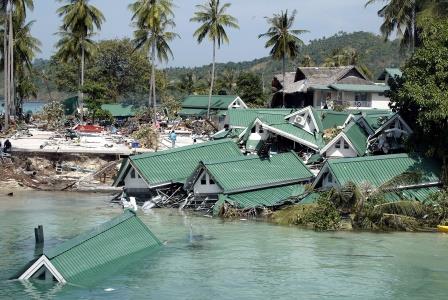December 26 marks 15 years since a 9.1 magnitude quake off the coast of Indonesia’s Aceh province triggered a tsunami that killed more than 230,000 people in Indonesia, Sri Lanka, India, Thailand and nine other countries.
When the quake opened a faultline deep beneath the Indian Ocean, it triggered a wave as high as 17.4 meters (57 feet), wiping some communities off the map in seconds.
Northern Aceh province bore the brunt of the disaster, where a total of 128,858 people were killed, according to statistics compiled by the government and aid agencies.
Day by day, the death toll rose, as bodies littered the streets, waiting to be collected, and others continued to wash ashore, decaying among piles of debris.
Hospitals and morgues struggled to cope with injured and bewildered victims and bloated corpses.
Over 570,000 people were displaced and 179,000 buildings and homes destroyed in Indonesia as the wave swallowed large parts of the coastline. Massive reconstruction aid in Banda Aceh has since rebuilt a new city on top of the ruins.
Sri Lanka was the next worst-affected country with a death toll of about 40,000, while in Thailand almost 5,400 people were killed including many foreign tourists.
In India, nearly 42,000 people, or close to 10,000 families, were rendered homeless by the waves that struck islands off the eastern coast. More than 3,500 people were killed and nearly 9,000 died on the mainland, mostly in the southern state of Tamil Nadu.
The tsunami garnered an enormous international response, with an estimated $13.6 billion in official aid and private donations pledged for the recovery.
WARNING SYSTEM
Those killed in 2004 received no formal warning of the approaching waves and had almost no chance to get out of the way.
Since then, millions of dollars have gone into a vast network of seismic and tsunami information centres, setting up sea and coastal instruments and erecting warning towers.
More than $400 million has been spent across 28 countries on the early-warning system, comprising 101 sea-level gauges, 148 seismometers and nine buoys.
But doubts linger about how ready countries on the Indian Ocean really are for another giant wave.
Some experts say complacency about the maintenance of the system is leaving millions vulnerable and governments still warn of the ever-present risks.
(Content and photos syndicated via Reuters)













